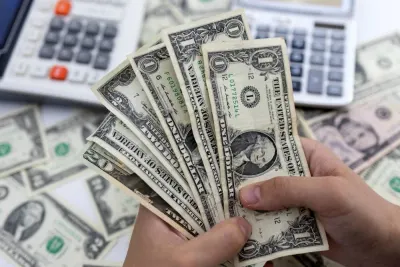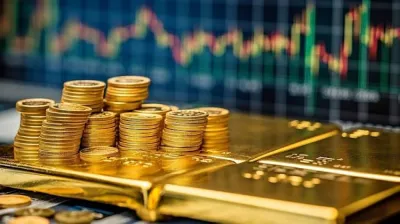The US has historically maintained a strong dollar policy. But as the world fights back to contain the bruising economic fallout of coronavirus restrictions, the Wall Street has taken to opposing sides on the fate of the dollar in the recovery.
JPMorgan Asset Management and T Rowe Price see the currency weakening as US economic exceptionalism wanes, while PineBridge Investments expects it to strengthen.
While most on Wall Street called for a weaker dollar in January, the world’s reserve currency went on a run that left speculative funds scrambling to cover $30bn of net short positions as Treasury yields climbed and expectations of rate hikes were brought forward.
That trade soured in April, with the Bloomberg Dollar Spot Index slipping 2.3%.
The binding narrative among dollar forecasts is expectations for the pace of recovery in the world’s biggest economy.
The US has inoculated more citizens than any other country, giving it an edge in the race to re-open.
Coupled with the Biden administration’s multi-trillion-dollar fiscal stimulus and the Fed allowing inflation to overshoot, it’s spurring the likes of PineBridge Investments to predict more dollar gains.
“Positive US data might very easily kick-start a dollar rally again,” according to Commerzbank currency strategist Thu Lan Nguyen.
On the contrary, not everyone is convinced the US will continue outpacing peers.
For JPMorgan Asset’s Shusha Maharaj, US exceptionalism is set to fade as other nations catch up on vaccine rollouts and economic re-openings in the second half of the year.
The London-based strategist is keeping tabs on developed markets like Europe, the UK and Japan, and sees the euro outperforming the dollar in the medium term.
The euro has climbed about 3% from a four-month low in March, and broke through the key $1.20 level last week.
Despite warnings about long-term headwinds for the dollar, which is seen as “substantially overvalued” by some analysts, here’s the undeniable reality: Dollar is the king, still.
The US currency is on one side of almost 90% of foreign-exchange transactions and accounts for two-thirds of international debt.
Virtually all international trades in oil are priced in dollars.
The dollar’s hold over the world of foreign exchange has grown even stronger during the Covid-19 pandemic.
When the markets are teetering, investors view the US currency as the safest haven, even more so than gold, the yen or the Swiss franc.
As the grim economic implications of the virus outbreak strained markets across the world, demand for the dollar soared, pushing other currencies lower.
The euro, which was involved in 32% of FX transactions in 2019, is the only currency that comes anywhere close to the dollar. But the single currency’s allure was undermined by the region’s 2010 sovereign debt crisis and the European Central Bank’s use of negative interest rates.
The yuan accounted for just 4% of currency trades in 2019.
Make no mistake, the greenback has an overarching sway over the financial world amid the central role US banks and currency play in the global economy.
US Treasury Secretary Janet Yellen had signalled earlier this year that she’d return stability and predictability to the $6.6tn-a-day currency market.
And investors should also keep in mind how a strong-versus-weak-dollar equation impacts their investments.



